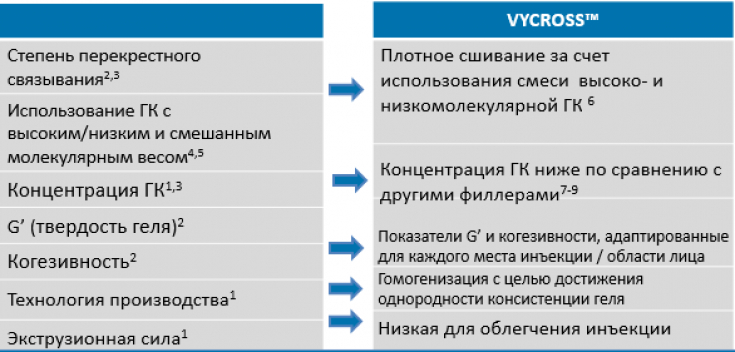The procedure of contouring requires not only professional skills from the doctor, but also the ability to understand the materials used by him. Dermal fillers must have a number of characteristics that will provide a safe and effective aesthetic correction.
To obtain a high-quality result, it is extremely important to pay attention to the durability of the filler, so that the effect of the procedure is as long as possible.
On estet-portal.com read what parameters should be considered when choosing a dermal filler.
Contouring with fillers: quality criteria for fillers

So what parameters should you pay attention to when choosing a dermal filler?
All dermal fillers differ from each other in a number of key characteristics:
• degree of cross-linking;
• hyaluronic acid concentration;
• use of high/low or mixed molecular weight hyaluronic acid;
• G’ (gel hardness);
• cohesiveness;
• production technology;
• extrusion force.
The optimal combination of these characteristics allows manufacturers to create the perfect dermal filler.
It is thanks to the VYCROSS™ technology of Allergan that Juvéderm® are the absolute benchmark for safety and efficiency.
The article was written on the recommendations of a cosmetologist, dermatovenereologist Tatiana Knysh.
The role of the BDDE in filler safety and efficacy
BDDE is a powerful crosslinker. This substance works due to the chemical activity of the epoxy groups at both ends of the hyaluronic acid chain.
BDDE forms a stable ester bond with the hydroxyl groups of hyaluronic acid, and has a lower toxicity compared to other crosslinkers.
There is a suggestion that BBDE may have a carcinogenic effect. Unreacted BDDE molecules have been found to be mutagenic in fruit flies, but are maintained at trace levels in fillers.
Highlights of working with leather quality: how to get the best result
Gel hardness and cohesiveness: important filler characteristics
G’ (gel hardness) depends on the crosslink density, and may affect other filler characteristics such as lifting potential and viscosity.
Possibility of displacement after insertion of a filler with a higher G ’ less, resulting in greater cohesion and lifting.
Higher G’ a large extrusion force is required, which can make it difficult for the filler to pass through the needle.
Gels with a high strength structure have a higher level of hardness and resist deformation to a greater extent than gels with a lower hardness.

Cohesivity – it is the ability to resist spreading. It is also an important filler characteristic, which is affected by the degree of cross-linking of the gel.
Thus, the correct concentration of hyaluronic acid and lifting potential (the ability of the dermal filler to resist deformation and flattening) determine the quality of fillers.
Juvéderm® VOLIFT® - the number one drug for premature aging
VYCROSS ™ – creation of effective and safe fillers
VYCROSS ™ company "Allergan" provides tight cross-linking of low- and high-molecular hyaluronic acid, resulting in a gel with a tightly cross-linked microstructure.
This dense network provides greater filler stability, which allows the filler to last longer in the tissues. Also, this gel has minimal expansion due to low water absorption in combination with a low concentration of hyaluronic acid. Individualization of the hardness and cohesiveness of the gel leads to an optimization of the lifting and shaping effect.
Homogeneous consistency, cohesiveness and tissue integration allow for smooth filler injections, and the result is as natural as possible.
In the process of production using VYCROSS ™ the filler is homogenized, resulting in homogeneous gels with a lower extrusion force, which makes the injection of the drug much more comfortable.
Original drugs of the company "Allergan" You can only purchase from an authorized distributor.
Read the latest articles in Telegram







Add a comment